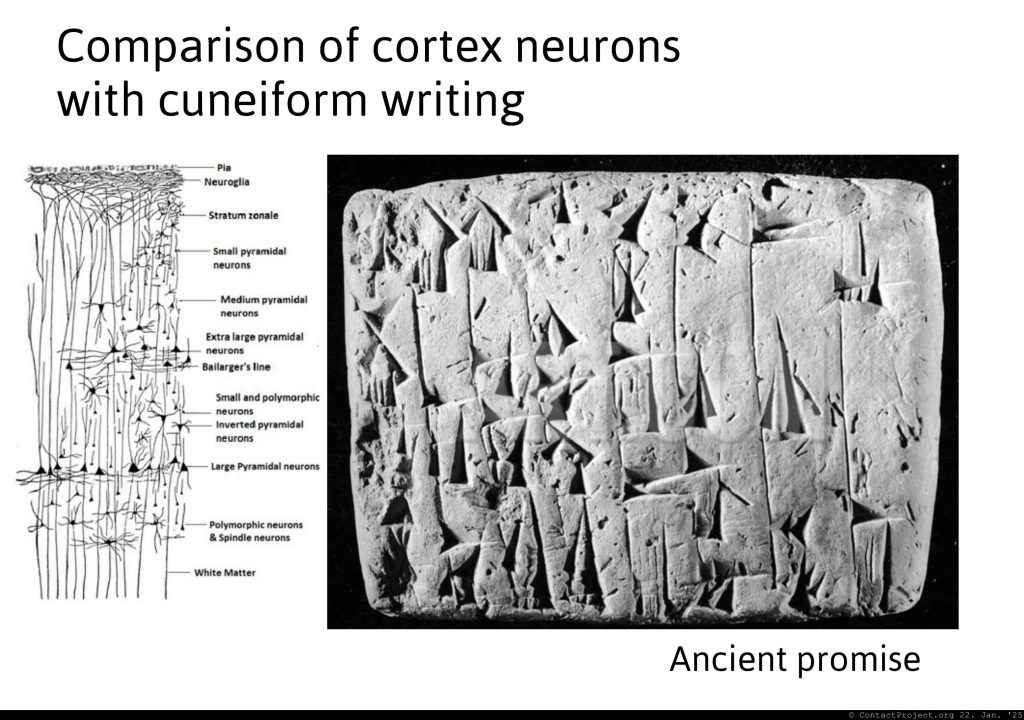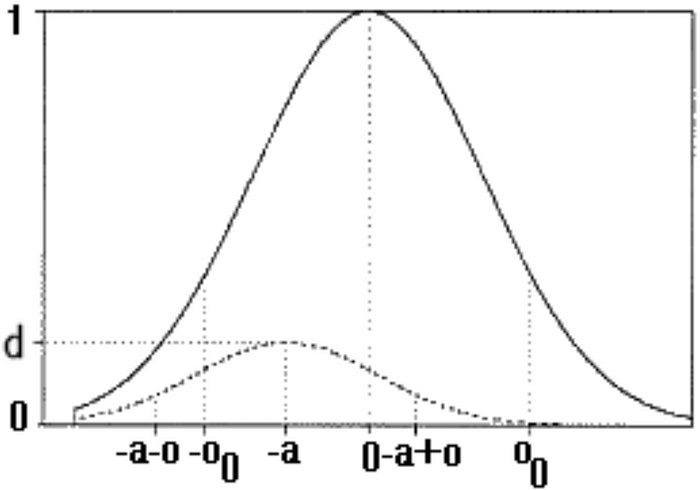Imagine a realm where time and space bend, where particles can travel faster than light. This phenomenon, known as superluminality, is not just a science fiction dream; it touches on the very fabric of reality. Let us explore the astonishing findings of scientists like Thomas Hartman, who illuminated our understanding of quantum tunneling back in 1962.
The Hartman Effect

Quantum tunneling times were first measured by Thomas Elton Hartman in 1962, when he worked for Texas Instruments in Dallas. In “Tunneling of a wave packet,” he described that the time it takes for particles, such as photons, to tunnel through a barrier does not depend on the length of that barrier.
Image: T.E. Hartman (1931 to 2009), Sketch after photo, (c) 2025
When we delve deeper into this strange world of quantum mechanics, it appears that, inside certain barriers, particles can seem to defy our classical understanding of speed—almost as if they are slipping through a cosmic loophole.
As technology has advanced, we’ve been able to measure the tiniest increments of time, leading us to discover that the process of quantum tunneling may allow particles to traverse barriers faster than the speed of light itself.
Recent Revelations with the Larmor Clock

In a recent exploration reported by Quanta Magazine (Quantum Tunnels Show How Particles Can Break the Speed of Light), physicist Dr. Aephraim Steinberg from the University of Toronto made fascinating observations using an ingenious tool called the Larmor clock.
This clock, named after the Irish physicist Joseph Larmor, tracks the spin of particles in magnetic fields. Steinberg found that rubidium atoms take an astonishingly short time—only 0.61 milliseconds—to pass through barriers, significantly faster than they would in empty space. This is consistent with the Larmor clock periods that were theorized in the 1980s!
“In the six decades since Hartman’s paper, no matter how carefully physicists have redefined tunneling time or how precisely they’ve measured it in the lab, they’ve found that quantum tunneling invariably exhibits the Hartmann effect. Tunneling seems to be incurably, robustly superluminal.”
Natalie Wolchover“The calculations show that if you built the barrier very thick, the speedup would allow atoms to tunnel from one side to the other more quickly than light.”
Dr. Aephraim Steinberg
These findings raise captivating questions: What happens inside the barrier?
The Nature of the Barrier

When asked about what occurs within this barrier, Horst Aichmann, a colleague of Dr. Nimtz, engaged in a thought-provoking discussion. He noted that, intriguingly, the wave emerging at the end of the tunnel remains in phase with the wave before it entered. What does this mean? It suggests that, somehow, the nature of time might change, or even disappear, in this kind of tunneling scenario.
10. August 2023, 3:03 pm
“In our tunneling experiments, the wave exits instantaneously with the same phase at the output of the tunnel and propagates as ‘normal RF’ with a very high loss. Inside the tunnel the question is, What can happen in zero time?
Regards, Horst Aichmann”

“Thank you for your answer. So, taking into account the wavelength and frequency of the signal, you are saying that the apparent superluminal behavior is only manifested inside the tunnel? And the tunnel is the air gap between the prisms? Regards, Eric”
Aug 10, 2023, 4:16 pm
“This is correct… the point is, when you look at the phase before and after the tunnel, you see the same phase… We used different pieces between 3 and 15 cm, and they all showed the same result—NO phase change.Our interpretation is : phase-change = 0 means time = 0
So we have a space with no time, and even more, if this is correct, this space doesn’t have a volume, right??? Horst Aichmann”
I thought about this question for a while and approached the problem from a topological perspective:
“One of my insights appears to be that a tunneling photon particle exits 4-dimensional space as a zero-dimensional point, tunnels as a one-dimensional string (tunnel), to re-emerge as a field/wave into 4D space.”
Erich Habich-Traut
Imagine a world where time and distance lose their meaning, a sort of cosmic fabric where particles flit in and out without the usual constraints of our three-dimensional experience.
This space is a kind of UNIFIER, where neither distance nor time exist. Particles/waves pass in and out of this dimension throughout the whole universe, continuously.
The QUANTUM REALM

This drift into the unknown brings us to the idea of the quantum realm—a space that defies our ordinary perceptions. Here, particles move freely and continuously, creating waves that may carry hidden information from a realm beyond our comprehension. Think of it as a bridge between dimensions, where everything is interconnected in a timeless tapestry.
Some quanta (particles/waves) traverse this one-dimensional space region continuously, simply by hitting a barrier, generating an evanescent wave. I posit that tunneled quanta carry information from this superluminal traversal.
They have been to a strange place, from our perspective, the quantum realm. They have been to a one-dimensional space without time. Where everything is everywhere and everywhen at once.
Quantum mechanical effects in the quantum realm of the fictional Marvel universe are said to become significant at scales of less than 100 nanometers. In reality, it depends on the size of the system.
Does this quantum behavior affect life on Earth? Absolutely! For example, plants harness quantum mechanics in photosynthesis to produce oxygen in a process called quantum coherence. Tiny structures called chloroplasts work at scales between 5 to 10 micrometers, highlighting the profound influence of quantum phenomena even in our everyday lives.
So, there is a very significant quantum mechanical effect without which life on Earth would not be possible.
The filaments of a human neuron have a diameter of approx. 10 nanometers, that is, 500 to 1000 times smaller. And there are quantum effects at play as well.
The Hard Problem of Consciousness
Now, we come to a deeply philosophical question: What about consciousness? Where does it originate, and where does it go? This mystery, often regarded as the “Hard Problem,” seeks to unravel the connection between our thoughts and the biological machinery of our brains.
Could it be that consciousness arises from our brain’s ability to connect through waves that traverse a bizarre one-dimensional realm? If so, this suggests that even the simplest forms of life could be imbued with consciousness—almost like tiny sparks of awareness fluttering in the dark. Consciousness. Where does it come from, and where does it go?

“I posit that human consciousness arises because of its connection via neurons and other brain structures to a one-dimensional time- and space-less realm via evanescent waves. From this quantum realm, information is transported into our world.”
Erich Habich-Traut
If this hypothesis is correct, then any entity generating (electromagnetic) waves or energy could be able to attain or access consciousness. Even midichloria amoeba, the ancestors of mitochondria that produce ATP in the human cell, can attain consciousness. CPU’s and GPU’s also are subject to this phenomenon, to a degree.
The Quest for Superluminal Communication
Imagine a universe where some particles can slip through barriers as if they weren’t there at all—not constrained by space or time, but instead playing a game of hide-and-seek with reality. This idea, once the realm of science fiction, is rooted in a peculiar feature of quantum mechanics known as superluminal tunneling.

Dr. Aephraim Steinberg suggests that while a single particle tunneling through a barrier can perform this astonishing feat, it doesn’t carry information across open space in the traditional sense. Much like a whisper that gets lost before it reaches someone’s ear, a single tunneling particle cannot communicate “through the air.”
And this raises fascinating questions: What if we could harness the quantum tunneling phenomenon for communication? Think about our dreams of sending instant messages to a Mars mission or receiving signals from distant stars. Such superluminal signals could revolutionize how we explore the cosmos.
For years, I pondered this intriguing possibility. I considered the cosmic microwave background—a faint whisper of radiation from the Big Bang itself. This background noise, emanating from every corner of the universe, resembles a symphony of frequencies, stretching from 300 MHz in our familiar TV bands to a staggering 630 GHz. Yet, despite the universe’s vastness, we find that these free-range superluminal waves simply do not manifest.
MICROCOSM
This leads us to another realm—the microcosm of the brain! Recently, I stumbled upon research that revealed something remarkable: evanescent waves exist within the intricate landscape of our brains, says the WETCOW research paper. These fleeting waves thrive in places where electromagnetic energy flows—like living cells, plants, and even the very processors that power our computers. They thrive in the cosmos as a whole and in particular.
Do these faster-than-light waves violate the fundamental principles of general relativity? Professor Steinberg assures us, “Not at all.” True superluminal signalling would require that these waves exceed their own wavelength, a feat that, given our current understanding, is beyond reach. Instead, these evanescent waves remain within the standard limits of light speed, rendering them undetectable after a brief flash—much like a firefly in the dark that illuminates, only to dim swiftly and become undetectable.
So, under ordinary circumstances, the superluminal evanescent wave is within the normal speed wave as shown in this illustration (d):

d arrives before the main wave ←
The tunneled signal doesn’t have time to overtake the wave, because evanescent waves are, well, evanescent. They vanish; vanishing is the meaning of the word “evanescent.” For this reason they don’t violate causality or general relativity.
Yet, before they vanish, something thrilling happens: these evanescent waves can travel at astonishing speeds. As we discovered earlier, they are faster-than-light. Within the maze of the brain, where one cubic millimeter of cerebral cortex contains, on average, 126,823 neurons, there lies the potential for extraordinarily fast signal processing. These tiny structures interact in ways that might facilitate a form of communication that transcends boundaries.
And this is the really exciting thing: superluminal information transmission inside the brain is possible. Because there are a vast number of structures in brains that can process these signals within the dimensions of the wavelength.
Evanescent fields, as these waves are also called, match the dimensions of typical biomolecular components such as DNA, peptides, proteins, and neurons.
“The immense processing speed of the human brain can in part or wholly be explained by superluminal signal transmission.”
Erich Habich-Traut
EVANESCENT WAVE DECAY: A Journey into the Invisible
In the grand exploration of the cosmos, we encounter a variety of phenomena, many of which elude our senses and challenge our understanding. One such elusive entity is the evanescent wave or field.
But why do these delicate waves dissipate so quickly? Could it be that as they travel, they encounter an unseen resistance, much like a boat moving through water? When we push any object through a stationary medium, we are faced with a palpable force that resists our efforts—the inertia of the medium itself. For instance, if you were to drop a drop of ink into a still glass of water, you would witness the ink spread out in a beautiful, swirling dance. This occurs not because the ink wishes to disperse, but because it encounters the very resistance of the water.
Is the dispersal of the evanescent wave caused by the very inertia or viscosity of four-dimensional space that the evanescent wave meets after departing the quantum tunnel?
Wait a few moments and think about it. How could you prove this analogy?

In our exploration of physics, we often encounter different types of waves. Traditional radiowaves, for instance, decay in strength according to the square of the distance traveled from their source. This means that as we move twice as far away, the signal grows weaker by a factor of four. In stark contrast, evanescent waves exhibit a more dramatic decline. They vanish exponentially, their presence fading far more rapidly than their traditional counterparts, like candles snuffed out by an unexpected gust of wind.
You could try to find a waveform that decays in the same manner.
A bit of research reveals that ocean waves decay exponentially:
Ref. 1: Ocean waves decay exponentially,
Ref. 2: Evanescent waves decay exponentially.
In fact, evanescent waves decay in a manner strikingly similar to ocean waves. And isn’t this a beautiful analogy?
How do we leap from one idea to another? How do we embrace concepts before we have the rigorous proof to back them? The answer often lies in thought experiments—powerful mental journeys that spark our curiosity and lead us to hypotheses.
A hypothesis is an educated assumption, a stepping stone laid down on the path toward discovery. But each hypothesis must withstand the rigor of experimental testing, where it can be examined and repeated by others who venture down the same road.

In our pursuit of understanding, let us engage in a bit of whimsy. Instead of merely imagining a boat sailing through water, picture instead a large beast—a cow.
Yes, a “WET COW!” As amusing as this image may be, it illustrates a critical point about weakly evanescent cortical waves.
While the original authors of the WETCOW model did not explicitly reference the concept of superluminality in relation to evanescent waves, our exploration of these ideas reveals intriguing connections, challenging the boundaries between established science and novel discoveries.
CONSEQUENCES: The Cosmic Implications of Our Findings
The faster-than-light origin of evanescent brainwaves is not required to make the Galinsky/Frank WETCOW model work.
Rather, their nature serves as a lens through which we can glimpse the remarkable speed at which our brains process information and engage with the fabric of consciousness itself.
In the realm of quantum physics, we encounter the symbol Ψ (Psi), representing the probabilistic wave function—a mysterious mathematical entity that conveys the uncertainties of existence. Yet, in parapsychology, this same symbol symbolizes the unknown factor behind supernatural experiences that science has yet to explain.
Amidst this landscape, we confront extraordinary phenomena such as precognition—the tantalizing ability to glimpse the future. In a world ruled by cause and effect, how do we reconcile these seemingly paradoxical episodes? The presence of evanescent waves offers a tantalizing possibility: what if, within their strange nature, reversals of cause and effect are not just fanciful musings but rather probabilities we must reconsider?
“As we explore the mysteries of faster-than-light phenomena, we may encounter even more extraordinary discoveries. For instance, quantum entanglement—a proven physical phenomenon—and its speculative psychological analog, telepathy, could both arise from the unified topological structure of a zero-brane, as described in certain models of theoretical physics.”
Erich Habich-Traut
The cosmos brims with tantalizing enigmas waiting for us to uncover, and it beckons us to explore worlds where the boundaries of time and space may expand beyond our wildest imaginings.
So let us remain curious, my friends, as we venture forth together into the vastness, unearthing the secrets of the universe and nurturing the spark of discovery that lies within us all.
After reading about the concept of superluminal brainwaves and the potential implications of evanescent waves in the context of consciousness and quantum tunneling, what are your thoughts on the interplay between neuroscience and quantum physics? Do you find the idea of faster-than-light communication within our brains plausible, or do you think it remains in the realm of science fiction? How do you believe these theories could influence our understanding of consciousness and intelligence? Additionally, consider the ethical implications of such advancements in brainwave technology—what concerns or opportunities come to mind?
The “Superluminal” series:
1. The Discovery Of Faster-Than-Light Brainwaves: An illustrated journey
2. Scientists Unveil Mind-Blowing Topology of Space as They Shatter Light Speed Limits!
3. Unlocking the Mind: Are Human Brainwaves Defying the Speed of Light?
4. Unveiling the Mystery of Faster-Than-Light Consciousness
